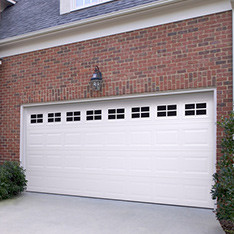How to Choose and Use the Right Smoke Detector for Your Home
It is extremely important to have a working smoke alarm in your home so you can keep yourself and your family safe from a fire. Fire alarms give us an opportunity to escape a fire as they warn us when a fire starts. It is however crucial to choose the proper alarm for your home and maintain it to experience its benefits. They are meant to prevent injuries and death in case of a fire. According to the statistics, those in homes that do not have properly working fire alarms are more likely to experience death due to a fire. Therefore, it is important to educate yourself about smoke alarms and know how to properly maintain them so they can be at their peak performance.

There are two types of smoke alarms that you should know about:
- IonizationIonization is the process of using electrically charged part... More sensing alarms – They may detect invisible fire particles produced by fast flaming fires.
- Photoelectric sensing alarms – These alarms detect visible fire particles produced by slow smoldering fires.
Most studies have shown that you should have both types of alarms in your home to maximize your chance of escaping a fire. You could get one of each alarm or use a dual-sensor model that offers both technologies. Most importantly, you should make sure that the alarms in your home are working properly.
Most homes have fire alarms installed in them; however, the units may not work due to missing or disconnected batteries. To keep yourself and your loved ones safe, you should follow these tips when it comes to fire alarms:
- You should have a smoke alarm on every floor of your home, in the hallways, inside bedrooms, and outside of sleeping areas. Families have about three minutes to escape when a fire alarm goes off, so make sure that you are giving yourself and your family the chance to escape a fire by having a properly working fire alarm.
- Fire alarms should be replaced every 10 years.
- Your fire alarm should be tested based on the instructions of the manufacturer, and you should replace its batteries when needed.
- Never disable an alarm when it goes off or take used batteries from other products to replace missing batteries for the fire alarm.
- Your family should have an escape plan, and everyone should be aware of it so they can implement it if the alarm sounds.
- Sometimes dirt can block the sensor of the fire alarm and prevent it from working properly. You can gently vacuum it to prevent this.
In the current era of fire alarms, there are many kinds and brands of them available for purchase, so picking the right one for your home can be confusing. Here are some tips for you on choosing the right fire alarm for your home:
-
Check the label of your fire alarm
It should have UL or ETL (Intertek’s Electrical Testing Labs) certification. That means that it has gone through the proper testing to meet those standards. You should also note the manufacture date on the back of the alarm as they lose efficacy over time, so always get the one that has the most recent date listed on it.
-
Figure out the power source for your fire alarm
When you have a hard-wired alarm, it is powered by your home’s electrical system and has a built-in battery for backup, so it can keep working in case you lose power. You should always change removable batteries every two years, or earlier if the alarm starts to chirp. However, any sealed batteries last about 10 years at which point the whole alarm unit should be replaced.
In some homes, hard-wired alarms would not be practical, so the battery-only alarms are used. These alarms have nine-volt batteries which are replaceable. These batteries should be changed every six months. You could always purchase an alarm with a 10-year built in battery which will last as long as your alarm unit does. These are a higher cost than battery-operated alarms.
-
Know the types of sensors available on the market
As previously mentioned, there are ionizationIonization is the process of using electrically charged part... More and photoelectric smoke detectors. IonizationIonization is the process of using electrically charged part... More sensors are best for detecting smoke from flaming fires but are not good for smoldering fires. However, photoelectric sensors are best for smoldering fires, but they do not detect open flame fires. You can mix these two types of sensors around your home or get a unit that has dual-sensor alarms that combine both technologies. However, these are more costly.
-
Location of your fire alarm is important
Where you place your fire alarm in your home is very important. They should be on every floor of the home, plus one in each bedroom and in the hall outside of each sleeping room. Alarms should be installed on the ceiling at least 12 inches away from the wall. They should never be placed close to ceiling fans, and they should be at least 20 feet from cooking appliances.
-
Connect your fire alarms if possible
If it is possible, connect your fire alarms, so when one goes off, the others will sound also. Hard-wired ones can be connected and some of the “smart” models can communicate wirelessly.
-
Fire alarms don’t last forever
Be aware that alarms should be replaced after 10 years. Always look at your alarm to see how its aged. If the white casing looks yellow, brown, or gray, replace it.
-
Always check for added features on your fire alarms
Some of the newer models have extra features. Always check for those. For example, they may have lights to light the escape route. There are also some units that have a voice alert, or they may work with a voice command.
-
Smart smoke alarms
These types of alarms connect either to an app or your phone or tablet. If a fire happens at your home, they send you an alert. You can have these types of alarms connected to your home security system so if an emergency happens, emergency services can be dispatched to your home right away. You can also receive low-battery alerts instead of chirps like you would with a battery-operated fire alarm. Also, since smart alarms can be integrated with your home security system, if the doors are locked, the system will automatically unlock them so you can escape.
The smart smoke alarms will be even more “smart,” as after June 30, 2024, all smoke alarms will have to meet new UL standards with a nuisance cooking alarm component. This means that the alarms will be more able to distinguish between burned food and a burning couch.

-
Not sure about where to place a fire alarm? Call the fire department.
If you are not sure where to place your fire alarms in your home, make sure to call the fire department. They are glad to advise you where you should place your fire alarms at your home.
-
Fire safety plan is important
Aside from having working fire alarms and fire extinguishers at your home, you should also have a good fire escape plan in place. The plan should include at least two ways out of each room and it should be practiced at least twice a year, once during the day and once at night. You should always remember to close the bedroom door before you go to sleep as it may slow down the spread of smoke, heat, and fire, which will give you more time to get away.
-
Fire alarm pricing
Basic fire alarms are about $10 and can be more based on the features they offer. So, a dual-sensor fire alarm is about $30 while combination smoke and carbon monoxide alarms are $20-$40. Depending on the features they offer, they become more expensive. Smart fire alarms can be about $100 or more. However, the safety of you and your family is important whether you have a cheaper or more expensive alarm. Therefore, make sure to remember that the most important thing is to have a working fire alarm that will save you from a fire.
Have you experienced a fire at your home or business? You need to call fire damage restorationFire damage restoration is the process of repairing and rest... More professionals as soon as the fire is out to restore the damage. RestorationRestoration is the process of returning a property to its pr... More technicians are highly trained and IICRC certified and will promptly arrive at your property to begin the restorationRestoration is the process of returning a property to its pr... More process right away. You can rest assured that they will restore your personal content impacted by the fire and fully restore any structures affected by it as well.













